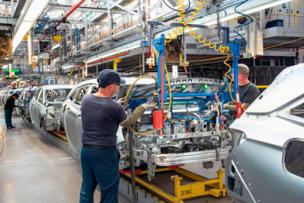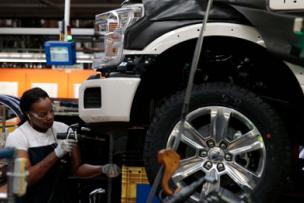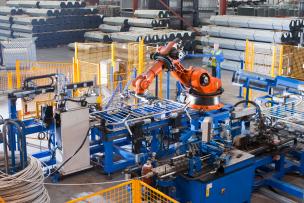It’s been over a year since the first shots were fired in what has become a multifront trade war. Increasingly, experts say that companies should plan on trade hostilities for the long haul. We talk to industry watchers and management consultants about how companies can deal with the current round of tariffs, the importance of risk planning and how a new NAFTA might help U.S. manufacturers.
Despite the hope that things could return to normal soon, that’s not likely, says Omar S. Nashashibi, founding partner of The Franklin Partnership LLP and head of government relations for One Voice, the advocacy program of the Precision Metalforming Association and the National Tooling and Machining Association.
“Companies have been slow to think of this as the new reality,” says Johan Gott, a principal at management consulting firm A.T. Kearney.
The trade war doesn’t seem to be having the hoped-for effect of bringing manufacturing back to America. In a recent U.S. Chamber of Commerce survey of large U.S. companies manufacturing in China, 40 percent said they were planning to, or already had, shifted manufacturing to other offshore locations such as Vietnam, India and Malaysia, according to Forbes.
As for small and midsize manufacturers in China, they are typically serving Chinese customers, and so are unlikely to move, adds Nashashibi. Others that import goods from China are adopting a “China-plus” strategy, he says, which means they are developing second, non-Chinese, sources.
Meanwhile, there were more tariffs imposed across several regions over the summer.
Decoding USTR Section 301: More China Tariffs
In September, the U.S. added 10 percent tariffs on $200 billion of imports of various kinds from China and threatened to increase that to 25 percent in January if no deal is reached with China.
The new tariffs cover a wide array of consumer goods such as food and apparel, but they also include more industrial items. Among them are chemicals; various oils and gases; rubber; products derived from iron, steel and other metals; industrial machinery; and vehicles and vehicle parts.
Additional tariffs on Chinese imports kicked in on Sept. 1, although some that would have affected the Christmas shopping season were delayed until Dec. 15. China retaliated with its own tariffs on U.S. exports, to which the U.S. responded by increasing the tariffs on another group of goods to 30 percent, says Nashashibi. Unless something changes, those kick in on Oct. 1.
“That’s another layer of disruption” that could have a substantial impact on capital equipment purchases, Nashashibi says. Last year, the U.S. imposed 10 percent tariffs on $200 billion of Chinese imports above and beyond the tariffs on aluminum and steel. Then in May 2019 tariffs were upped to 25 percent. Then in September, U.S. tariffs increased by another 5 percent.
“A lot of companies already budgeted the money and planned financing for that equipment at the lower 10 percent or even the 25 percent,” Nashashibi says. Now they have to adjust to 30 percent.
Meanwhile, in August, President Donald Trump officially declared China a currency manipulator, which “is actually a big deal,” says Nashashibi. The declaration opens the door for U.S. companies to sue Chinese companies on the basis of currency manipulation being an illegal subsidy.
If they win, they can ask for the imposition of countervailing duties on the Chinese imports.
Some companies have been positively affected by the trade war. Read “Amid Tariffs and Trade War, Manufacturing Shops Gain New Business.”




